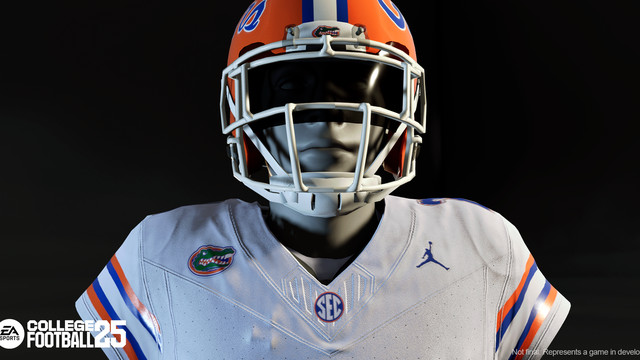This review is based on a screening at the 2024 Sundance Film Festival.
From Captain Marvel directors and Sundance veterans Anna Boden and Ryan Fleck, Freaky Tales is an unashamed and naked middle finger to racist, Nazi scumbags wrapped in a nostalgic ode to Oakland, California in 1987. While it’s an absolute blast at times and, frankly, much better for its straightforward approach, Freaky Tales never quite fully connects, and gives the vibe that a lot of fun was left on the table.
It’s easy to assume a Sundance film is going to be that flavor of capital C “Cinema” that begs a pondering walk home weighing the art’s thematic subtext. That would be a mistake and Freaky Tales is the proof.
The film opens with narration from Bay Area rap legend Too $hort describing the existence of a strange green glow over Oakland. The words appear on screen along with an ’80s, 8-bit landscape, complete with staticky VHS tracking errors. It quickly sets up what you’re in for, a fairy tale about underdogs and fighting back against bigoted assholes. It’s a giggling, charming premise that gives way to an intertwining story of otherwise disparate characters crossing paths told in four chapters, which gives me precious little choice in how I build this review, so…
Chapter 1: Punks vs. Nazis
As a hyper specific subgenre, punks-vs.-Nazis movies almost always work for me, and this part of Freaky Tales was no exception. There’s a grindhouse aesthetic to the production design and cinematography that really sings. Each chapter of the movie is filmed with its own style that supports the story it's telling, but none of the others have quite the same impact as the semi-true tale of a punk club banding together to fight back against the group of Neo-Nazi’s harassing them. The film grain is on display, and the cheaply splattered VFX play like intention rather than budget limitation.
Freaky Tales has moments that are full throated “fuck you”s to white-power turds while making full eye contact, and the punks aren’t the only ones who get pulpy, gory, and glorious vengeance on the band of neo-Nazi antagonists. These bloody and joyous encounters between arch-enemies is proof that when Freaky Tales finally gets to where it’s going, the film very much enjoys being there.
Chapter 2: Pedro Pascal Is Here…
… at his Pedro Pascal-iest. Playing a bone-breaking mob enforcer, Pascal is every bit the strong silent type that made him the internet’s favorite daddy. His character, though, is indicative of one of Freaky Tales’ chief problems. He’s a Western trope, a violent man who doesn’t belong at home or out on the lawless range, but here he’s a little too silent on his hunt for redemption. The rest of the cast, including Normani and Dominique Thorne as a rap duo looking for a break, have incredible charisma. Ben Mendelsohn’s “The Guy” chews every piece of scenery that’s put in front of him and Jay Ellis’ portrayal of real-life Golden State Warriors legend Eric “Sleepy” Floyd gets a hilarious, cartoon-superhero spin. All of it works on paper, and writing this paragraph is talking me into liking Freaky Tales a little more than I did, until I remember that on screen it all falls a little flat.
Chapter 3: Under the Influence
As an anthology, Freaky Tales is not shy about wearing its influences on its sleeve. There are nods to genre greats like David Cronenberg, John Cassavetes, and John Carpenter. There’s a kung-fu revenge sequence that is truly wild, while the titles of the chapters and the film itself Freaky Tales’ are pulled from the Too $hort discography. Chief among the influences at play though, is Quentin Tarantino, a filmmaker who built a career on pastiche. It feels too harsh to say that Freaky Tales is a wannabe Pulp Fiction, particularly in light of three decades worth of Pulp Fiction also-ran’s, but that’s not far off. Characters from one story walk past characters from another story in a diner. There’s a sequence in a car featuring black-and-white rear projection footage in the background, and right smack in the middle of things there’s a monologue about the best underdog movies of all time. Even the title, taken from a track on Too $hort’s Born to Mack record, is a sort of synonymous reworking of “pulp fiction.” It’s a strange experience watching an homage to something that was itself an homage, particularly when Freaky Tales doesn’t recontextualize that homage to say something new.
Chapter 4: Where It All Should Come Together
Co-writer and co-director Ryan Fleck grew up in Oakland and clearly loves the mythology of his hometown. His filmmaking partner Anna Boden said after my Sundance screening that she felt part of her job was making sure people who weren’t from Oakland could also get invested in the film. And so, Freaky Tales displays a passion for both the setting and the pop culture influences of the time and there are moments in the film where those two sides mix skillfully together, creating a vibey and energetic celebration. Ultimately, though, Freaky Tales doesn’t add enough of its own unique spirit to quite live up to its influences.






